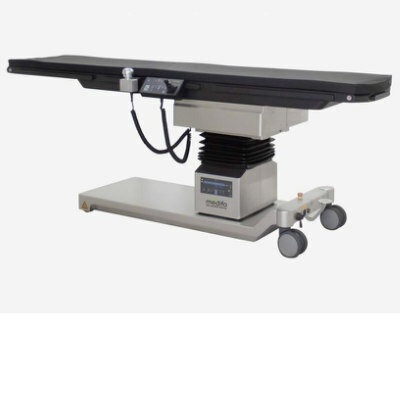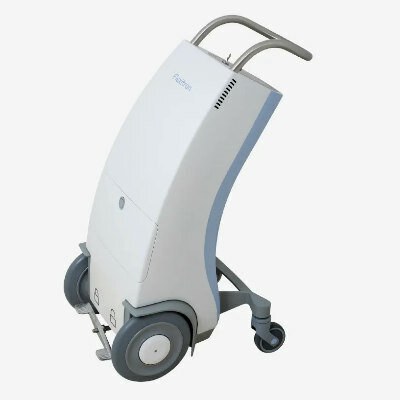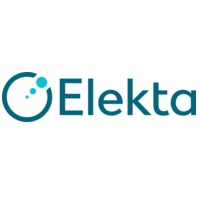Innovative Technology Detects Early-Stage Breast Cancer in Two Minutes
|
By MedImaging International staff writers Posted on 04 Dec 2023 |

Breast cancer is the second-most common cancer and among the second-leading causes of death from cancer for women. The sooner a malignant tumor is detected, the higher the chances of survival in breast cancer patients. Now, researchers are at the forefront of developing a groundbreaking method for early breast cancer detection, which holds the promise of being both more accurate and cost-effective than current diagnostic approaches like X-ray mammography, ultrasound, and MRI. This new technology, which has already completed test runs in just two minutes using less energy than a smartphone, offers a safer alternative to X-rays by avoiding high-level radiation exposure that can potentially damage DNA and lead to cancer.
Since 2001, researchers at University of Waterloo (Waterloo, ON, Canada) have been delving into the use of low-frequency electromagnetic waves for detecting early-stage breast cancer. Their significant discovery that these waves travel in straight lines has led to the development of a disruptive diagnostic device. This device, resembling X-ray mammography but without its limitations, employs low-frequency electromagnetic energy emitted from an antenna similar to those in smartphones. This energy, upon penetrating the breast, is captured by a metasurface or circuit board composed of interconnected pixels, with each pixel functioning as a receiver.
An AI system processes the data from the circuit board, eliminating the need for manual review by a technician. This advanced technology is capable of pinpointing a tumor's size and location, effectively detecting abnormalities even in dense breast tissue, an area where current diagnostics often fall short. The effectiveness of this system has been validated through tests on breast phantoms, artificial structures that mimic the properties of human breasts. The research team is now focused on advancing this technology for human trials and developing a prototype suitable for mass production. Their ultimate objective is to make this innovative diagnostic tool affordable and accessible globally, similar to the ease and frequency of in-pharmacy blood pressure tests.
“We are coming very close to providing a method for breast cancer detection at an early stage that is inexpensive and harmless for women,” said Dr. Omar Ramahi, lead researcher and a professor in Waterloo’s Department of Electrical and Computer Engineering. “We’re trying to make a serious contribution to women’s health and create an alternative that is clinically and commercially viable.”
Related Links:
University of Waterloo
Latest Radiography News
- Novel Breast Imaging System Proves As Effective As Mammography
- AI Assistance Improves Breast-Cancer Screening by Reducing False Positives
- AI Could Boost Clinical Adoption of Chest DDR
- 3D Mammography Almost Halves Breast Cancer Incidence between Two Screening Tests
- AI Model Predicts 5-Year Breast Cancer Risk from Mammograms
- Deep Learning Framework Detects Fractures in X-Ray Images With 99% Accuracy
- Direct AI-Based Medical X-Ray Imaging System a Paradigm-Shift from Conventional DR and CT
- Chest X-Ray AI Solution Automatically Identifies, Categorizes and Highlights Suspicious Areas
- AI Diagnoses Wrist Fractures As Well As Radiologists
- Annual Mammography Beginning At 40 Cuts Breast Cancer Mortality By 42%
- 3D Human GPS Powered By Light Paves Way for Radiation-Free Minimally-Invasive Surgery
- Novel AI Technology to Revolutionize Cancer Detection in Dense Breasts
- AI Solution Provides Radiologists with 'Second Pair' Of Eyes to Detect Breast Cancers
- AI Helps General Radiologists Achieve Specialist-Level Performance in Interpreting Mammograms
- Novel Imaging Technique Could Transform Breast Cancer Detection
- Computer Program Combines AI and Heat-Imaging Technology for Early Breast Cancer Detection
Channels
Radiography
view channel
Novel Breast Imaging System Proves As Effective As Mammography
Breast cancer remains the most frequently diagnosed cancer among women. It is projected that one in eight women will be diagnosed with breast cancer during her lifetime, and one in 42 women who turn 50... Read more
AI Assistance Improves Breast-Cancer Screening by Reducing False Positives
Radiologists typically detect one case of cancer for every 200 mammograms reviewed. However, these evaluations often result in false positives, leading to unnecessary patient recalls for additional testing,... Read moreMRI
view channel
PET/MRI Improves Diagnostic Accuracy for Prostate Cancer Patients
The Prostate Imaging Reporting and Data System (PI-RADS) is a five-point scale to assess potential prostate cancer in MR images. PI-RADS category 3 which offers an unclear suggestion of clinically significant... Read more
Next Generation MR-Guided Focused Ultrasound Ushers In Future of Incisionless Neurosurgery
Essential tremor, often called familial, idiopathic, or benign tremor, leads to uncontrollable shaking that significantly affects a person’s life. When traditional medications do not alleviate symptoms,... Read more
Two-Part MRI Scan Detects Prostate Cancer More Quickly without Compromising Diagnostic Quality
Prostate cancer ranks as the most prevalent cancer among men. Over the last decade, the introduction of MRI scans has significantly transformed the diagnosis process, marking the most substantial advancement... Read moreUltrasound
view channel
Deep Learning Advances Super-Resolution Ultrasound Imaging
Ultrasound localization microscopy (ULM) is an advanced imaging technique that offers high-resolution visualization of microvascular structures. It employs microbubbles, FDA-approved contrast agents, injected... Read more
Novel Ultrasound-Launched Targeted Nanoparticle Eliminates Biofilm and Bacterial Infection
Biofilms, formed by bacteria aggregating into dense communities for protection against harsh environmental conditions, are a significant contributor to various infectious diseases. Biofilms frequently... Read moreNuclear Medicine
view channel
New SPECT/CT Technique Could Change Imaging Practices and Increase Patient Access
The development of lead-212 (212Pb)-PSMA–based targeted alpha therapy (TAT) is garnering significant interest in treating patients with metastatic castration-resistant prostate cancer. The imaging of 212Pb,... Read moreNew Radiotheranostic System Detects and Treats Ovarian Cancer Noninvasively
Ovarian cancer is the most lethal gynecological cancer, with less than a 30% five-year survival rate for those diagnosed in late stages. Despite surgery and platinum-based chemotherapy being the standard... Read more
AI System Automatically and Reliably Detects Cardiac Amyloidosis Using Scintigraphy Imaging
Cardiac amyloidosis, a condition characterized by the buildup of abnormal protein deposits (amyloids) in the heart muscle, severely affects heart function and can lead to heart failure or death without... Read moreImaging IT
view channel
New Google Cloud Medical Imaging Suite Makes Imaging Healthcare Data More Accessible
Medical imaging is a critical tool used to diagnose patients, and there are billions of medical images scanned globally each year. Imaging data accounts for about 90% of all healthcare data1 and, until... Read more
Global AI in Medical Diagnostics Market to Be Driven by Demand for Image Recognition in Radiology
The global artificial intelligence (AI) in medical diagnostics market is expanding with early disease detection being one of its key applications and image recognition becoming a compelling consumer proposition... Read moreIndustry News
view channel
Bayer and Google Partner on New AI Product for Radiologists
Medical imaging data comprises around 90% of all healthcare data, and it is a highly complex and rich clinical data modality and serves as a vital tool for diagnosing patients. Each year, billions of medical... Read more





















